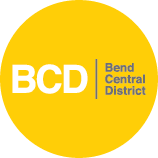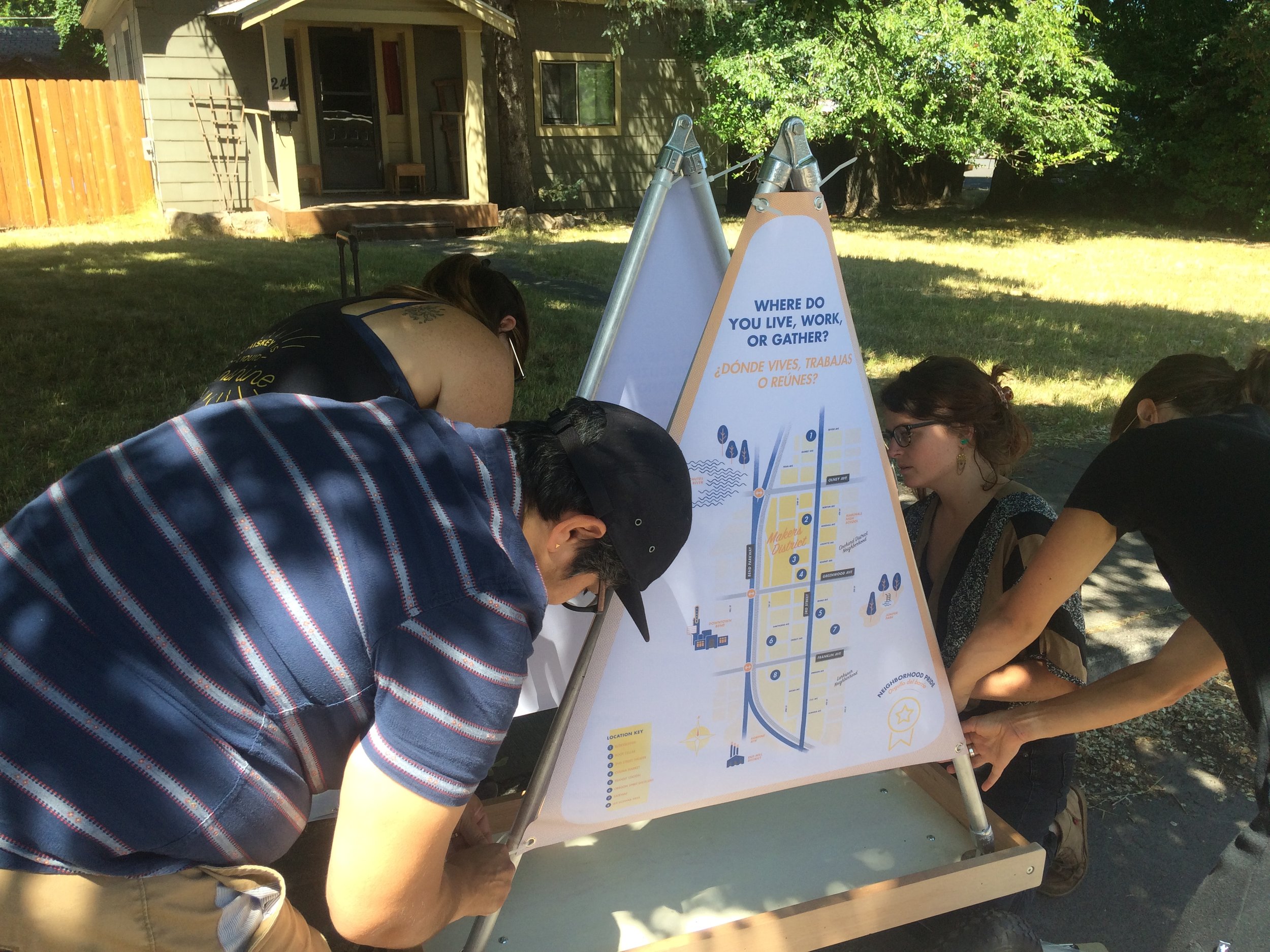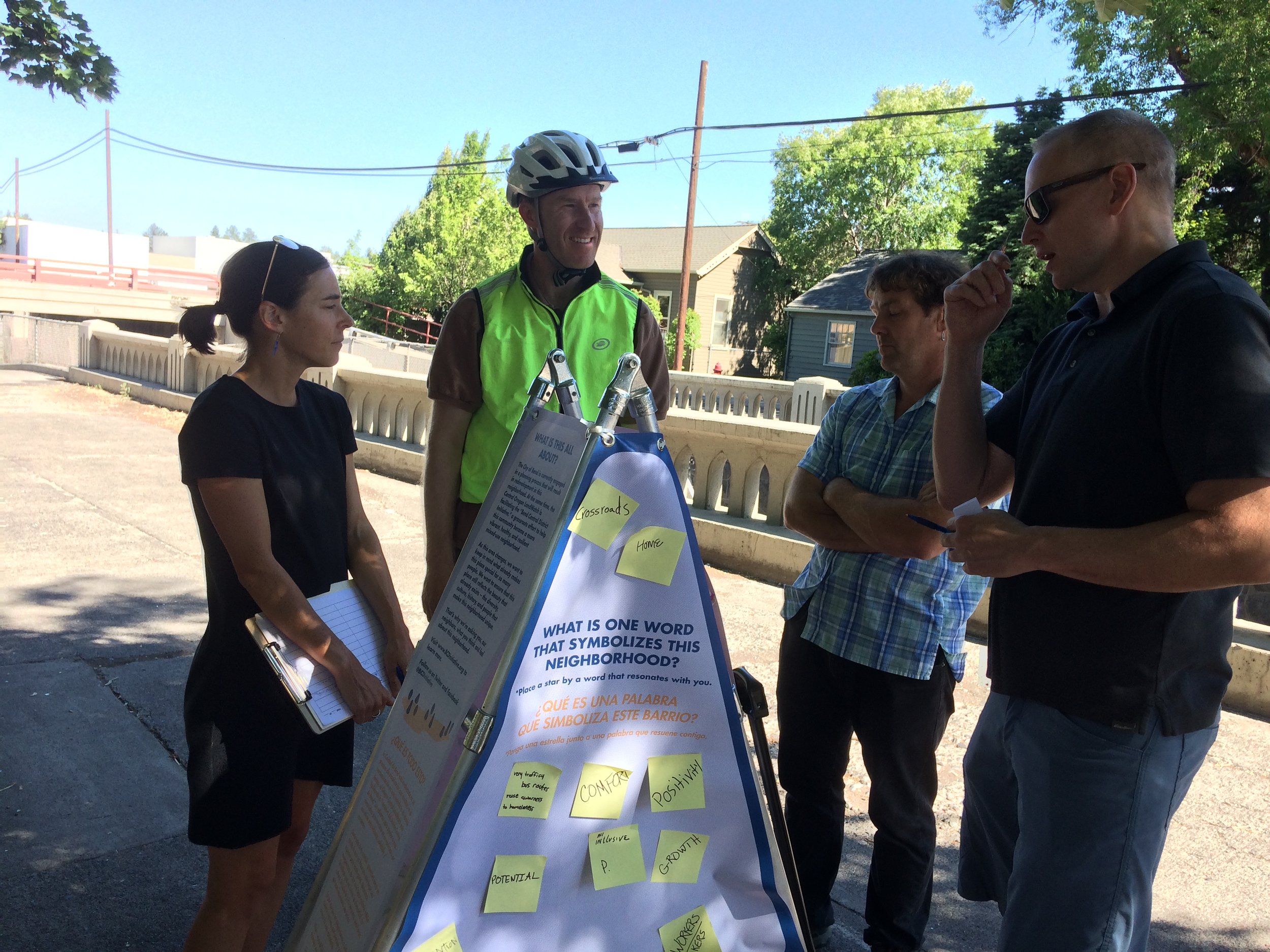Uncovering a neighborhood identity in the BCD
As the Bend Central District changes, we want to keep in mind what already makes this place special for so many people. It is important to recognize the beauty that exists here and the diversity, culture, history, and people that make this area unique. This summer, our Visionary Board conducted primary research and outreach to learn about community needs. Download their presentation.
Primary Research & Outreach Methods
The Visionary Board members and our consultant, Pueblo Planning, co-created an engagement tool to facilitate connection outside of the often sterile and inaccessible planning settings. The tool allowed us to meet people where they are with culturally and socially relevant, linguistically appropriate, and place-specific activities that enabled residents to share their expertise and shape planning and design outcomes.
The engagement tool is custom made out of a flyer wagon shell with an added metal frame and tent-shaped unit with four panels that serve as the starting point for substantive conversations. It includes a map, pockets to collect sensory information, and asks for one-word to describe the area.
“Some place where all walks of life feel comfortable with each other and no “class” is a class - we’re all equal.”
Populations
The team identified 10 target populations to reach, including pedestrians, Latinx folks, light industrial workers, and the elderly. They scheduled pop-ups at the appropriate locations to engage these different target audiences.
Now the Visionary Board will work with Pueblo Planning to create a Neighborhood Identity Report which will include:
A cohesive community narrative of place with desired social and physical character of the Bend Central District as it redevelops.
Identification of community resilience strategies to combat gentrification and displacement.
Short-term opportunities for community-led initiatives to solidify and celebrate neighborhood identity and promote community cohesion and resilience.
We are excited to share these results at our community celebration on Tuesday, October 22nd. Please save the date!
To stay up to date with our projects and events, be sure to subscribe to our email list and follow us on Facebook and Twitter!
About Pueblo Planning
“Pueblo Planning, a values-driven social enterprise, is a participatory planning and design firm that intentionally focuses on populations that are often left out of the planning process and those most vulnerable to the impacts of planning decisions (i.e., QTBIPOC- Queer, Trans, Indigenous, Black and People of Color; unhoused; disabled; low-income; etc.). We meet people where they are and use art-making and storytelling as a way for people to share their experiences, knowledge, and vision for what kind of community they want to live in and one that would best serve their needs.”





